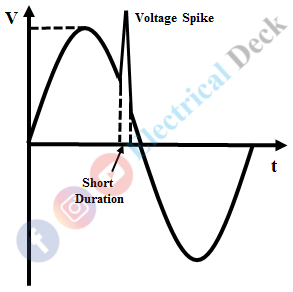A transformer is a static device, that transfers electrical energy from one circuit to another without any physical connection. It works on the principle of magnetic induction, which induces emf in another circuit by means of a magnetic field without changing the frequency.
Since the transformer's primary and secondary circuits are electrically isolated. Hence all the transformers we use in transmission and distribution networks are called isolation transformers.
What is an Isolation Transformer?
The transformers in transmission and distribution systems are used for purpose of stepping up and stepping down the voltage levels. An isolation transformer is also similar to other transformers, specially designed for providing electrical isolation between two circuits (primary and secondary) without changing the secondary parameters (voltage, current, and frequency levels).
Basically, in step-up transformers, the secondary turns are greater than the primary turns, and vice-versa in the case of step-down transformers. We can say that for a step-up transformer N1 < N2, V1 < V2, and I1 > I2. Similarly, for an step-down transformer N1 > N2, V1 > V2, and I1 < I2.
But for an isolation transformer, the voltage and current levels are equal on both the primary and secondary sides. Obviously, the number of turns on primary and secondary are also equal. Therefore, for an isolation transformer, N1 = N2, V1 = V2, and I1 = I1. Hence, it is also called a 1:1 ratio transformer in terms of voltage, current, and turns ratio.
An isolation transformer provides isolation physically and electrically between two circuits. It isolates and protects the electronic circuits and the persons against electrical shock from the main lines.
The electrical energy from primary to secondary is transferred through magnetic coupling. The transformers with the ratio of 1:1 are only used as isolation transformers. A typical isolation transformer without any physical and electrical connection between two windings is shown above.
Function of Isolation Transformer :
The main function of an isolation transformer is to reduce voltage spikes in the supply lines. Due to lighting, static electricity, or due sudden change in the voltage usage. It affects the electrical power supply lines to produce voltage spikes, transients, and surges. The voltage spike is a sudden rise in the voltage levels which lasts for a very short duration (3 nanoseconds or more) traveling at high speed.
The voltage spikes carry high voltages ranging from a few volts to several thousand volts. Such high voltage spikes if reaches the load can affect the interruption of services or can damage the equipment. If we connect an isolation transformer between the power supply lines, the voltage spikes can be minimized before reaching the load. Let us see how it is achieved.
Let us assume a voltage spike of high voltage and current with rapid change is produced at the primary side of the isolation transformer (i.e., on the supply side). When this voltage spike passes through the primary winding. Since the inductor opposes the sudden change in the current. The inductive primary winding doesn't allow the change in current instantaneously but rather changes exponentially.
As the current increases, the flux increases inducing voltage in the secondary. Due to the inductive nature of the primary and secondary, it opposes the spike from reproducing in the secondary. It is also seen that the opposition to the current will be proportional to the speed at which it changes.
Since a voltage spike contains fast-changing voltage and current, the opposition made will also be greater. Thereby, the spike in the secondary or load circuit is greatly reduced avoiding undesirable effects on load equipment as shown above.
Another important function of an isolation transformer is that it eliminates the grounding of load equipment or the secondary side. Hence the ground loop interference and noise effects on the load are eliminated by the use of an isolation transformer.
An isolation transformer ensures safety and protection to the sensitive equipment used in measurements, laboratory, medical equipment, etc from voltage spikes, ground loops, and other power line distortions.
The construction of an isolation transformer is similar to a normal core-type transformer. The secondary is completely isolated from the primary with electrostatic shields that suppress the noises. An autotransformer that consists of common winding for both primary and secondary cannot be used as an isolation transformer, due to the electrical connection between two windings.



